
OR
#OPINION
Modi's Moscow Mission: “Enduring and Expanding Partnership”
Published On: July 25, 2024 08:30 AM NPT By: Dinesh Bhattarai
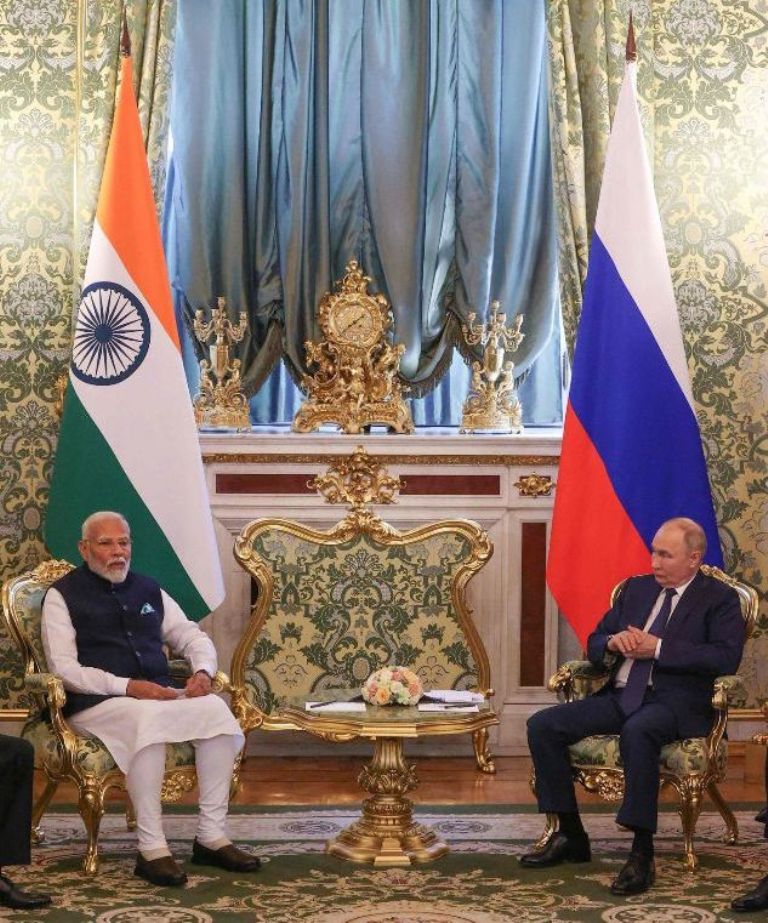
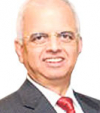
Dinesh Bhattarai
Dinesh Bhattarai, former diplomat and foreign policy expert, has served as the foreign affairs adviser of former prime ministers Sher Bahadur Deuba and Sushil Koirala.news@myrepublica.com
Indian Prime Minister Narendra Modi chose Russia for his first bilateral visit (July 8-9) in his third term. This is Modi’s first visit to Moscow since 2015. He had visited Vladivostok in September 2019 for the Eastern Economic Forum. The bilateral visit comes shortly after President Vladimir Putin’s fifth consecutive swearing in as President in May. The first visit of the leader of the world’s largest democracy to Russia since the invasion of Ukraine on February 24, 2022 coincided with a summit meeting of 32 countries belonging to the North Atlantic Treaty Organization (NATO) from July 9-11 in Washington D.C. where Ukraine was in central focus. NATO leaders showed their displeasure at the Modi-Putin meeting. The United States “directly raised concerns with India.”
Mr. Modi’s arrival in Moscow happened to coincide with the deadliest missile attack on Ukraine killing innocent children at hospital. Though India has avoided directly criticizing Russia’s war on Ukraine, Mr. Modi called these attacks “very painful and terrifying.” He is reported to have told Mr. Putin that “when innocent children are killed, pain is very terrifying, it is heart-wrenching.” Modi also said, “solutions will not be found on the battlefield,” calling for dialogue to end the war. He told his host that “resolutions and peace talks do not succeed in the midst of bombs, guns and bullets.” India offered all “possible support, contribution and cooperation required to address the particular challenge of Russia-Ukraine conflict and find peaceful solutions to it.”
When the two leaders met in Samarkand in September 2022 for annual meeting of the Shanghai Cooperation Organization (SCO), Mr. Modi had told the Russian leader that “this is not an era of war.”
US President Joe Biden called these attacks “horrific reminders of Russia’s brutality.” Ukrainian President Zelensky posted on X, describing “Modi’s meeting in Moscow a huge disappointment and devastating blow to peace efforts, to see the leader of the world’s largest democratic country hug the world's most bloody criminal in Moscow on such a day.” The UN Secretary General, several international organizations and many countries condemned Russian missile attacks on civilians as a war crime.
PM Modi’s programmes in Moscow included a private dinner hosted by the Russian President “as a special gesture,” and Prime Minister’s interaction with the Indian community. President Putin greeted the Indian PM as “dear friend,” and was happy to see him in Moscow. They exchanged their “views on contemporary regional and global issues of mutual interest.” When Mr. Modi and Mr. Putin toasted their friendship, Indian PM said, “the commitment of our relationship has been tested multiple times, and it has emerged very strong each time. Every Indian considers Russia to be India’s friend in good and bad times.” President Putin conferred on the Indian Prime Minister, the Order of Saint Andrew the Apostle- the highest honour for “distinguished contribution to the development of Special and Privileged Strategic Partnership between India and Russia and friendly ties between the peoples of the two countries.”
A significant number of the Indian diaspora lives in the West, particularly in the US, Canada and the United Kingdom. They have reached places of power and influence in their respective countries, and impact on the making and shaping of foreign policy decisions. While diaspora alone does not adequately explain India’s attitude towards the West, recently, India has increasingly drawn closer to the United States as a “natural ally,” and strategic partner. The June 2023 joint communique issued at the end of Prime Minister Modi’s visit to the USA, described India and the USA as the “closest partners, ranging their relations from seas to the sky.” Modi addressed the Congress, a rare privilege, reserved for “close US allies and partners.” India is a member of the QUAD – Quadrilateral Security Group. Despite these extensive engagements, India’s stance and its leaders’ statement unequivocally signal its firm intention not to join any alliance. The underlying message to the West is clear, “stay out of our affairs.”
After the end of the Cold War, India and Russia signed the Declaration on the India-Russia Strategic Partnership in 2000. It was in a completely different context than the Treaty of Peace and Friendship which was signed on August 9, 1971 at the peak of the Cold War. The 1971 Treaty came immediately after the secret visit of US Secretary of State Henry Kissinger to China in July 1971, which led to change the entire geopolitical landscape. Article 9 of that 1971 Treaty contained a provision that stated, “in the event of either party being subjected to an attack or a threat thereof, the high Contracting Parties shall immediately enter into mutual consultations in order to remove such a threat and to take appropriate, effective measures to ensure peace and security of their countries.” Indian diplomat TN Kaul wrote, “The treaty served as a warning to China and America to keep their hands off the Subcontinent.” The legacy of India’s deep partnership with Russia, forged in the 1970s during the Cold War continues in different forms and contexts.
The 21 series of these institutionalized dialogue alternated between the respective capitals, with the last meeting held in November 2021 in New Delhi. Since then, there have been no summit meetings between these two leaders because of the Covid-19 pandemic and Russia’s invasion of Ukraine. According to the joint statement issued, the 22nd Indo-Russian annual summit meeting held in Moscow covered detailed, extensive, wide-ranging discussions on “the political sphere, larger space of economic engagement covering extensively trade, capital linkages, energy, and science and technology cooperation.” The two leaders also discussed enhancing economic partnerships through connectivity corridors, including the proposed Chennai-Vladivostok maritime route. This strategic shipping corridor would link India’s central eastern coast with Vladivostok,” Russia’s main port city on the Pacific Ocean in its Far East. They also emphasized fostering greater people to people partnership and addressed key defense and security issues.
Summit meeting is the “highest mechanism to steer and drive cooperation between our two countries,” said the Indian Foreign Secretary. The meeting, he said, “not only took detailed stock of status of bilateral partnership across the whole range of areas, but also laid out the vision of the two leaders for the partnership in years ahead, principally focusing on economic agenda in our cooperation partnership, and discussed at length issues of regional importance for both the countries”. The issue of Indian nationals in the Russian army was raised and President Putin promised an “early discharge of all Indian nationals from the service of the Russian army,” who had been forced to fight with the Russian army in Ukraine.
An 81 point Joint Statement following the 22nd India-Russia Annual Summit entitled “India-Russia: Enduring and Expanding Partnership,” was released on July 9. A nine-point “list of outcomes” from the visit was also separately issued focusing on cooperation in areas of trade, economy and investment for the period 2024 to 2029 between the two countries. The statement appreciated “the special nature of this time-tested relationship,” based on a “foundation of mutual trust and mutual respect,” and strategic convergence.
Regular bilateral engagements at all levels, including during India’s Chair of SCO and G20 in 2023 and under Russia’s Chair of BRICS in 2024, contribute to further deepening and expansion of the growing bilateral partnership. They also discussed the “multi-faceted mutually beneficial India-Russia relations that span all possible areas of cooperation including political and strategic, military and security, trade and investment, energy, science and technology, nuclear, space, cultural, education and humanitarian cooperation.” The statement underlines the resilience of India-Russia Special and Privileged Strategic Partnership and the convergent and complementary approaches of their foreign policy priorities, and reaffirmed their commitment for its further strengthening. They stressed that, as major powers, India and Russia will continue to strive for global peace and stability within the framework of a multipolar world, despite the current complex, challenging and uncertain geopolitical climate.
Moscow continues to be the supplier of military hardware about 36% of India’s arms import in 2023. The two leaders agreed to pursue joint development and advanced weapons and encourage more joint production in India of components for Russian origin arms. There have been delays in the delivery of the spare parts of the defense equipment, which the Indian Foreign Secretary said, “both sides had a general sense of agreement that this would be expedited, including through setting up joint venture partnerships in India.” No new arms deals were announced during the visit and India continues to diversify its pool of arms suppliers including from the United States, France and Israel.
India has traditionally adhered to a non-aligned position ever since its independence in 1947. The architect of India’s non-alignment was its first Prime Minister Jawaharlal Nehru, who thought that, “India plays a prominent and independent role influencing others more than she is influenced herself.” In the post-Cold War era, the principle of non-alignment has evolved into the phrase “strategic autonomy.” India strives to position itself as an independent pole in the emerging geopolitical landscape of the twenty-first century. The recent visit is seen as a manifestation of India’s efforts to maintain balanced relations with Moscow.
India is skillfully navigating a complex diplomatic landscape. While refusing to condemn the invasion of Ukraine, it has been calling for peace. It is positioning itself as a reliable partner for the West in efforts to manage China’s rise and bolster its strategic influence. India is the second biggest importer of Russian oil at a discounted rate after China. According to media reports, New Delhi’s purchases of Russian crude oil was the highest, reaching 2.1 million barrels per day in May 2023. India’s trade with Russia remains imbalanced, imports touching close to $65 billion, and Indian exports accounting just $4 billion, which according to the Indian Foreign Secretary, is “primarily due to strong energy cooperation.”
The visit has bilateral and global dimensions, which are equally important. The world is changing and changing very fast. Power has shifted from the Atlantic theater to the Asia-Pacific region, which was changed to the Indo-Pacific region in 2018 to give centrality and recognition to the rising India. This brings the gravity of geopolitics to South Asia. New relations are being forged and old ties are being revisited and reinvigorated in the Asia-Pacific as regional countries adapt to rising security concerns and uncertainty surrounding US-China relations.
Two wars are going on: Ukraine-Russia and Hamas-Israel. The world is truly polarized. Two competing visions are in play. One is led by the United States which advocates rules based international order, liberal democracy and Western values, and the other is led by China combined with Russia advocating for “friendship without limits” promising development and prosperity and no questions asked about democracy and human rights. Trade, connectivity and data get manifested in the Belt and Road Initiative (BRI) proposed by China. Today these two poles remain closely interlinked unlike in the past. The two sides are adversaries trying to outsmart and weaken each other and expand their “spheres of influence.” Countries are asked to take sides.
The visit signals several messages:
Indo-Russian ties have remained strong despite pressures from sanctions on Moscow from Western governments. The visit underscores the enduring strength of Indo-Russian ties, reaffirming their historically close relations and signaling that Russia remains a priority in Indian foreign policy. India aims to keep its line of communication with Russia open, especially when Moscow’s relations with Beijing deepen. Russia relies on India and China to sustain its war efforts in Ukraine. The Kremlin has characterized Mr. Modi’s relationship with Mr. Putin as "very trusting."
Given the timing and context of the visit, it is evident that India aims to communicate two key points to the West. First, the visit was to give a message of India’s intention not becoming overly dependent on the Western powers. Second, India seeks to convey to the West that pushing Russia closer to China would not serve their interests. The visit’s underlying message is also to counterbalance China’s new found influence. Analysts opine that if Russia becomes a junior partner to China, it would be impossible to contain China in Asia. There are fears that Moscow’s increasing reliance on China might make it an unreliable ally for New Delhi in any future conflicts with Beijing. Relations between New Delhi and Beijing have sharply deteriorated ever since the border clash of June 2020 on their disputed Himalayan border that left 20 Indian soldiers dead and killed four Chinese troops.
Prof. Sergey Ranchenko of the Johns Hopkins School of International Studies, writes India building bridges to Russia plays to India’s strategic interest, which is to insert itself between Beijing and Moscow. He writes Mr. Modi needs “Russia’s benign neutrality in any possible Indian conflict with China, whose time-honored territorial claims in the Himalayas could well lead to a special military operation much closer to Modi’s home turf than a war in faraway Europe.”
The visit underscores India’s intention to position itself as an independent and a leading power in the evolving multipolar world. New Delhi aims to balance its relationships with Russia, China and Western powers led by the United States amidst shifting global geopolitics. Kremlin sources quote PM Modi telling President Putin the focus of the entire world on this visit, drawing out different meanings. He said, "Our relationship is extremely important not only for two countries but is also of great significance for the entire world. In the current global context, India and Russia as well as their partnership have taken on a new importance. We are both convinced that further efforts are needed to ensure global stability and peace. In the future, we will continue to work together to achieve these goals.”
Summit meetings should be seen in larger perspectives. The visit came at a time when Mr. Putin is increasingly isolated by the Western leaders, and has been declared as a persona-non-grata in many countries because of the illegal war in Ukraine. Mr. Modi’s visit signifies that efforts to isolate Russia on the global stage in response to its actions in Ukraine are likely to be unsuccessful.
China’s Global Times on July 9, 2024 opined, “Closer relations between Russia and India mean that US policy of containment and isolation against Russia is frustrated. Meanwhile, India’s balanced diplomacy is not only in line with its own interests but also contributes to a global strategic balance which has long been challenged by the US hegemony.”
Commenting on the Ukrainian crisis, the Chinese Foreign Ministry spokesperson Lin Jian underlined: the need to observe three principles for de-escalating the situation, “namely no expansion of the battlefield, no escalation of fighting and no fanning up the flames by any party. All parties should remain cool-headed and exercise restraint, and avoid taking any action that may further escalate the situation.” Spokesperson said China’s position on the Ukraine issue is consistent and clear.
A US Statement spokesperson said, “we have been quite clear about our concerns about India’s relationship with Russia. We have expressed those privately, directly to the Indian Government and continue to do so, and that hasn’t changed.” The US said, “it continues to urge India to support efforts to realize an enduring and just peace in Ukraine based on the principles of the UN Charter, based on upholding Ukraine’s territorial integrity and its sovereignty.” The visit underscored a long-standing point of tension related in U.S.-India relations.
India and Russia have geopolitical differences and convergences. New Delhi is moving closer to the United States. It is a member of QUAD and close to the Indo-Pacific strategy, which Moscow rejects. Both India and Russia are associated with BRICS and SCO, and working to be a bridge to the global South as well. Global South has good relations both with Moscow and Beijing as well. It was under the leadership of India that the African Union got into G20. Russia has friendship without frontiers with Beijing with which India’s relations are in a state of “abnormality” to quote the Indian Foreign Minister. China is India’s main adversary and strategic competitor.
New Delhi has not condemned the aggression, but has repeatedly called for peace and seeks solution through dialogue and diplomacy. Though Russia has supported India through thick and thin during the Cold War, Russia has been silent on Sino-Indian conflict. Given the deep friendship between New Delhi and Moscow, it seems unlikely for Russia to back China in the event of an India-China conflict. India could be a bridge between Russia and the United States. After all, United States President Joe Biden and Russian President Vladimir Putin had their summit meeting on 16 June 2021 in Geneva also known as Geneva 2021 wherein they attempted to narrow down their differences. What if Russia, China and India come together, and form a Russo-Sino-Indian strategic triangle and work for the Asian century? Several meetings of foreign ministers of Russia, India and China (RIC) have been held in the past.
America should be wary of the Primakov proposition which Russian Prime Minister Primakov put forward during his visit to New Delhi in December 1998. The triangular idea is not new. South Korea, Japan and China held their first trilateral summit meeting recently. The last such meeting was held in December 2019. There are issues of common concerns such as climate change and pandemic, and a host of transnational challenges, which have been bringing nations together to act on the international stage with coordination, cooperation and collaboration.
This is a period full of complications and contradictions, uncertainty and confusion. The world is moving to a multipolar system which is more complicated than bipolar of the Cold War and less predictable but offers options and opportunities for the middle and smaller powers to maneuver between the larger powers. Multipolarity helps countries from being dragged into another country’s conflicts, gives choices to diversify their engagements to protect themselves from the risks and limitations of relying too heavily on a single country. This helps them protect national honour and secure national space by ensuring a multi-layered network of ties with friendly countries.
Nepal context
Given its sensitive geostrategic location, Nepal stands as an anchor for peace and stability for neighbours and the world. A peaceful, stable, democratic and prosperous Nepal is the chief need of the world. Of late, Nepal has been confronting significant geopolitical difficulties. Nepal may be forced to choose sides. Message should be sent categorically that it does not want to take any sides and join any security and defense architecture. Nepal cannot be a camp follower, and should be aware of the potential political costs of taking sides in this geo-strategically sensitive location.
The fundamental principle that Nepal follows in its foreign policy is based on the principles and purposes of the United Nations Charter, five principles of the peaceful co-existence (Panchsheel), and norms of international law. There is a BIG NO to any defense and security pact relationship with any country. Nepal pursues democratic pluralism at home and multi-polarity in international relations. As there is an intense area of proxy competition in different forms and manifestations in its periphery, Nepal should be able to read messages coming from these developments and their likely implications on national interests and decipher them what lies behind them, and use its wisdom to expand policy choices and options in order to protect its sovereignty and independence.
Nepal should focus on building its internal strength, institutional capacity and stay out of security alliances. Nepali leaders should be clear that it is Nepal and Nepalis alone who have to deal wholly and exclusively with its neighbours on a daily basis and with the wider international community. No country will speak about Nepal’s concerns and difficulties. It is Nepal and Nepalis alone that have to take up its interests at bilateral, regional, multilateral and international levels.
The war on Ukraine has impacted Nepal and its citizens. Reports indicate that hundreds of Nepali are recruited into the Russian army with 35 losing their lives and over 150 still on the battlefield. They are appealing to the Nepali government to intervene and bring them home. Efforts made so far for their discharge from the Russian army appear to be minimal. Nepal could think of leveraging professionals trained in the former Soviet Union and use them under Track 2, Track 1.5 and back-channel diplomacy. While Nepal joined the 141 nations in condemning Russia’s illegal invasion of Ukraine at the United Nations, its stance remains directed against the flagrant violation of international law rather than targeting any individual state. Nepal unequivocally advocates for peace, justice for all, territorial integrity, sovereign equality of nations, and seeks solutions based on the principles and purposes of the UN Charter, the Five Principles of Peaceful Coexistence (Panchsheel), and norms of international law. These principles align closely with the fundamentals of Nepal’s foreign policy. That should clarify its position to concerned state authorities. Nepal firmly stands on the side of peace, justice, and equality.
Nepal firmly believes in the time-tested principle of resolving conflicts through dialogue and diplomacy. History has shown that no amount of guns or missiles has ever provided a lasting solution anywhere. The current scenario is just the opposite. The rival global powers are intensifying global anxiety, making people nervous worldwide and leaving the world on the edge. The consequences of this approach is sure to be widespread, doing irreparable damage to global peace, stability and prosperity for generations to come.
You May Like This
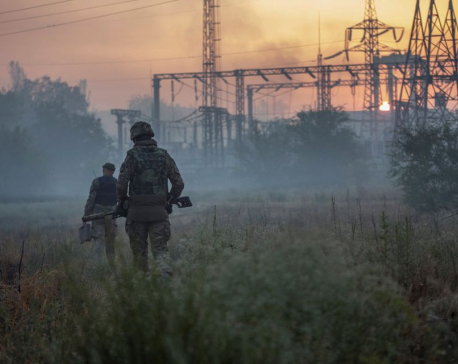
Ukraine and Russia forces entrenched, Putin to mark WWII anniversary
June 22: Ukrainian and Russian forces remained entrenched in eastern Ukrainian battlegrounds going into Wednesday, a day of commemoration in... Read More...
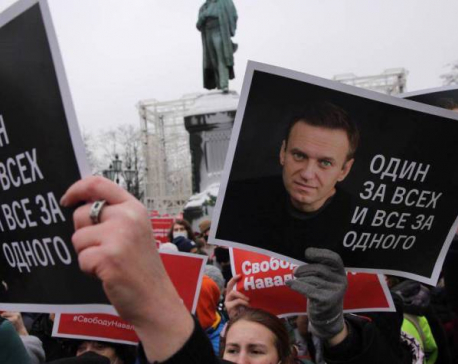
Can Navalny take down Putin?
As the Kremlin’s response to the protests has shown, Putin and the state are one and the same. That makes... Read More...
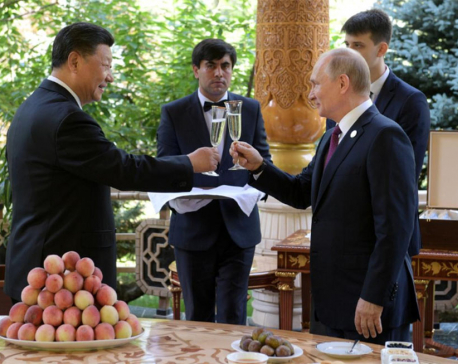
Russia's Putin gives China's Xi ice cream on his 66th birthday
BEIJING, June 15: Chinese President Xi Jinping celebrated his 66th birthday on Saturday with Russian President Vladimir Putin, who Xi considers... Read More...
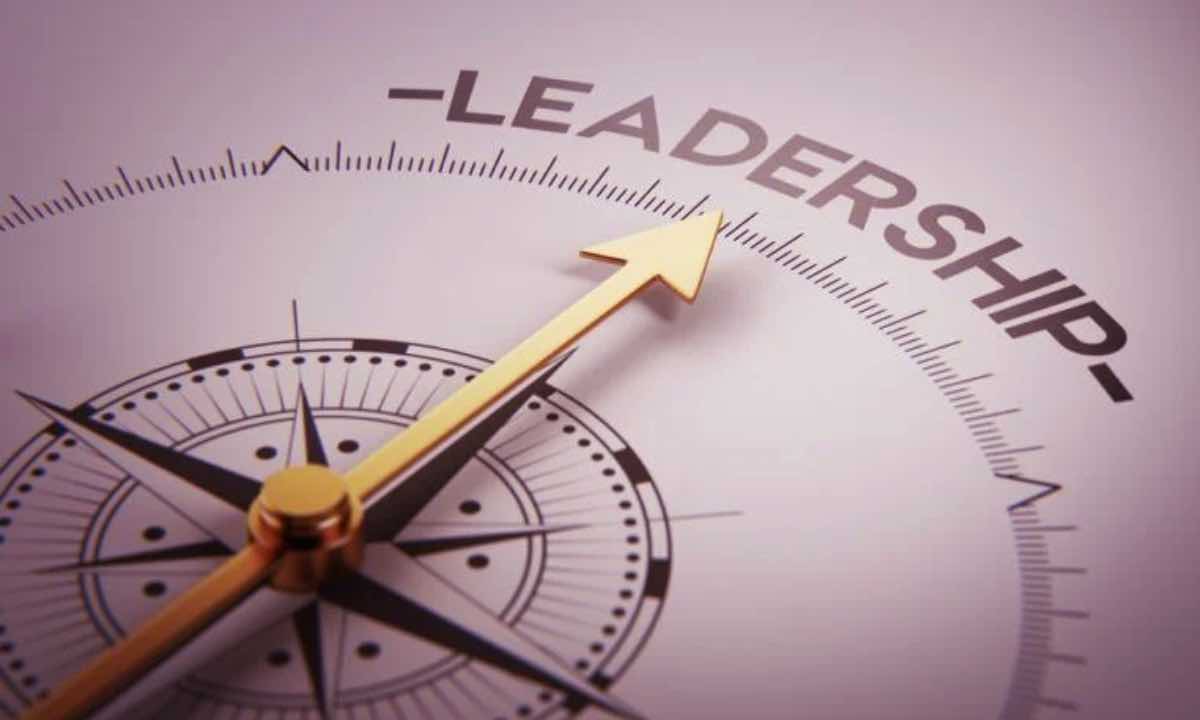
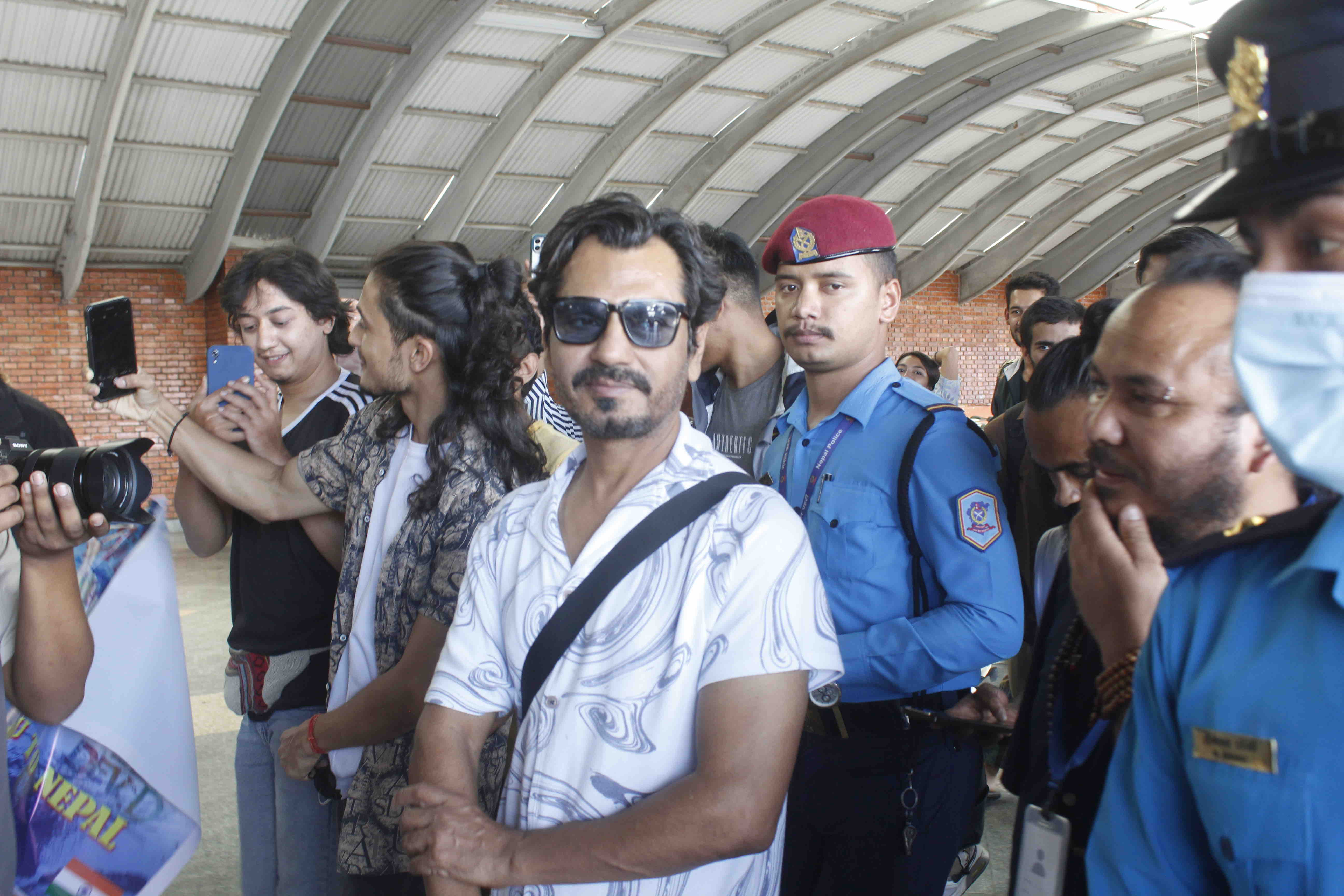
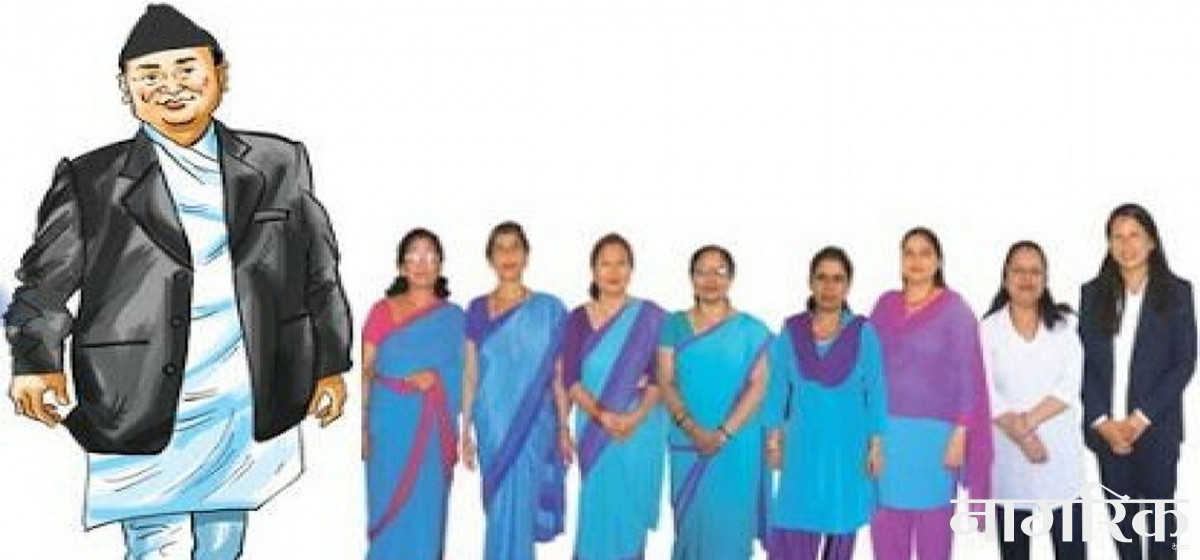
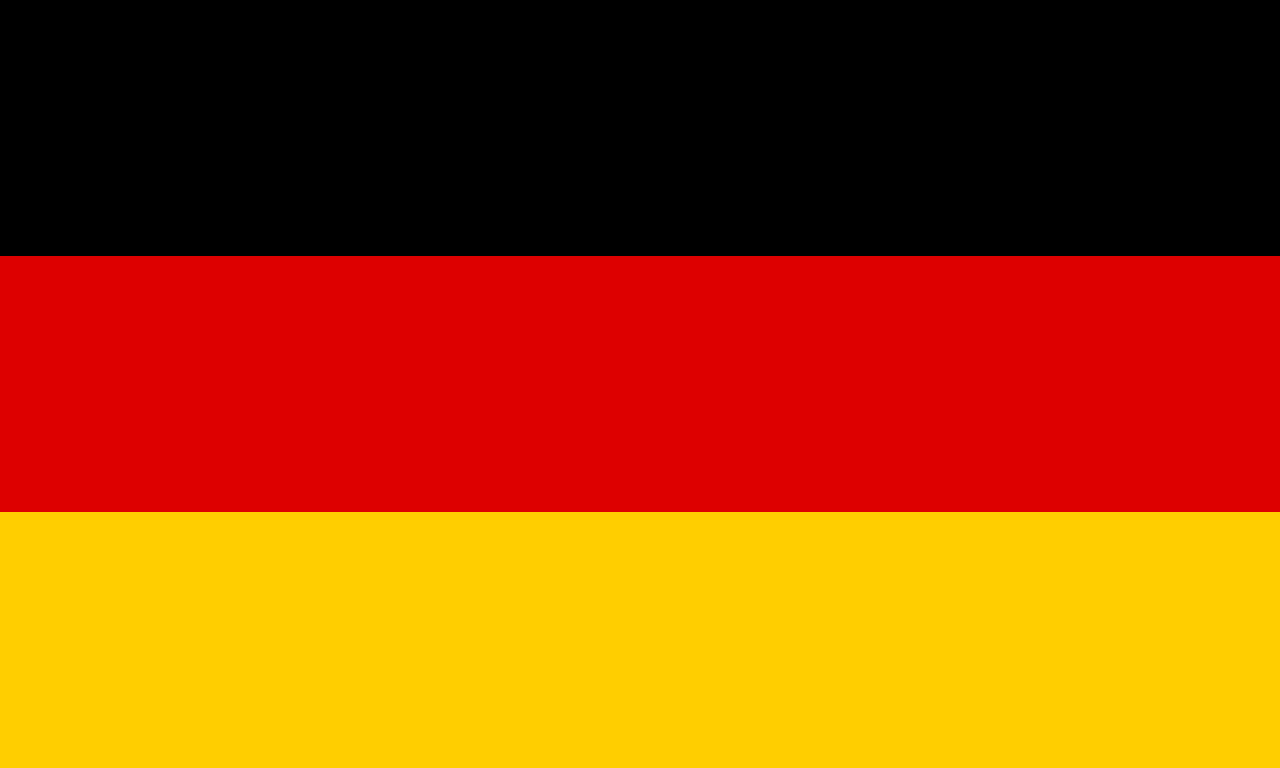

Just In
- No best employee award for eighth consecutive year
- NAC blames govt and CAAN for failure to generate profit
- ‘Bribe-seeking’ DSP Shahi suspected of involvement in terrorist activities
- Foreign companies took over Rs 150 billion in dividends from Nepal in eight years
- PM Oli confers awards on 40 civil servants
- Germany to provide Rs 7.5 billion in grant to Nepal
- PM Oli says no immediate prospects for salary increment for civil servants
- Cyclist dies in motorcycle collision in Nawalparasi




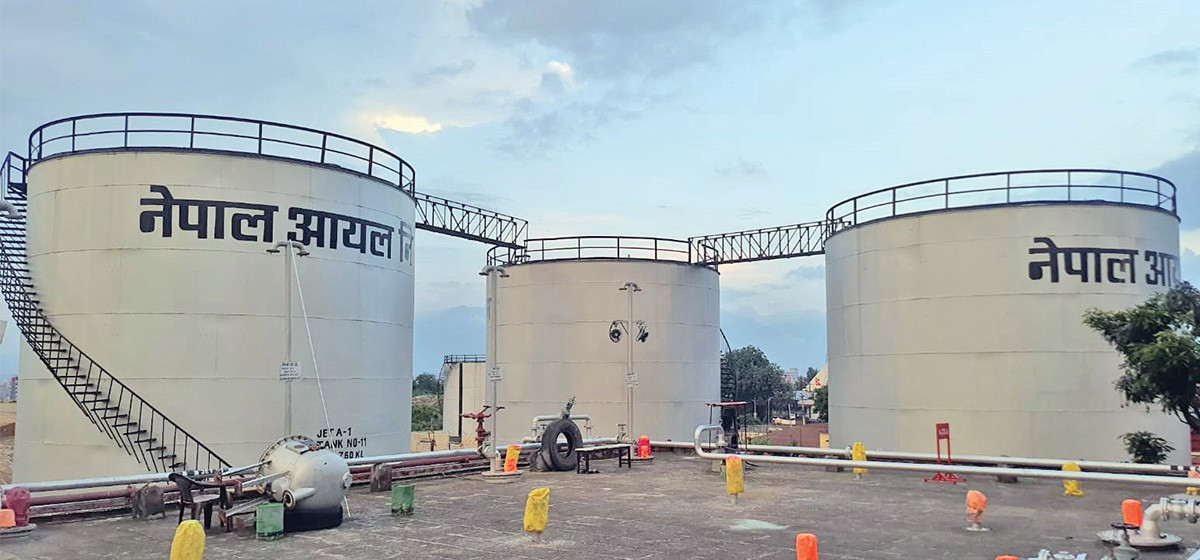
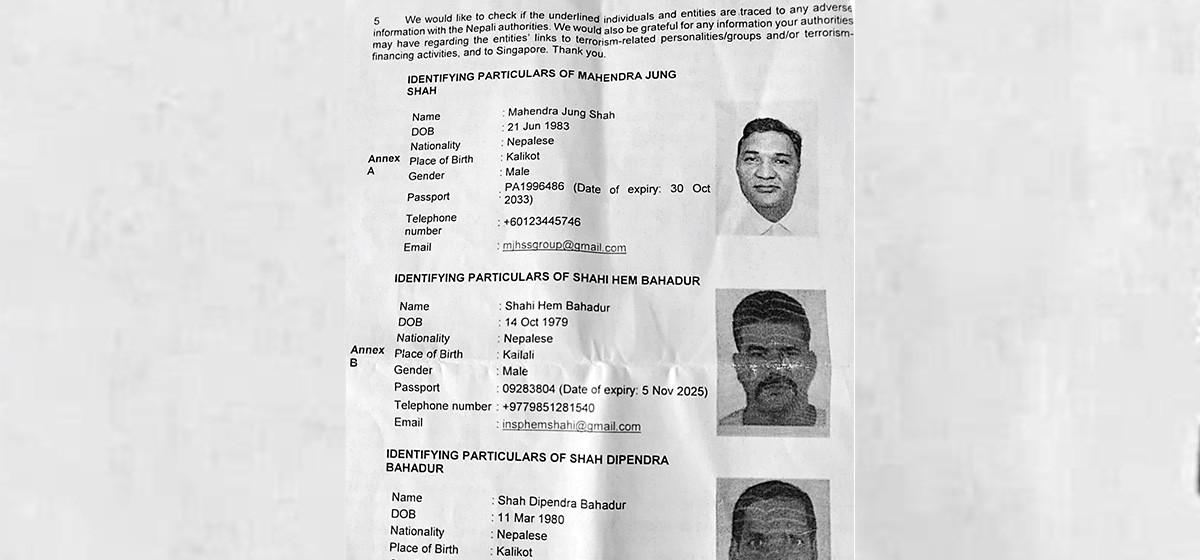


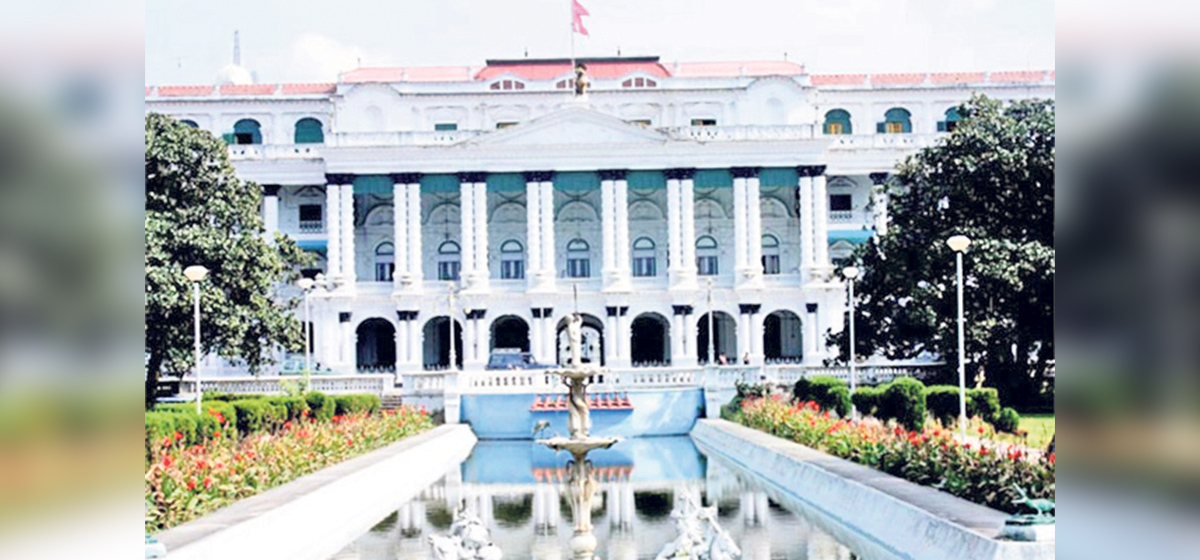
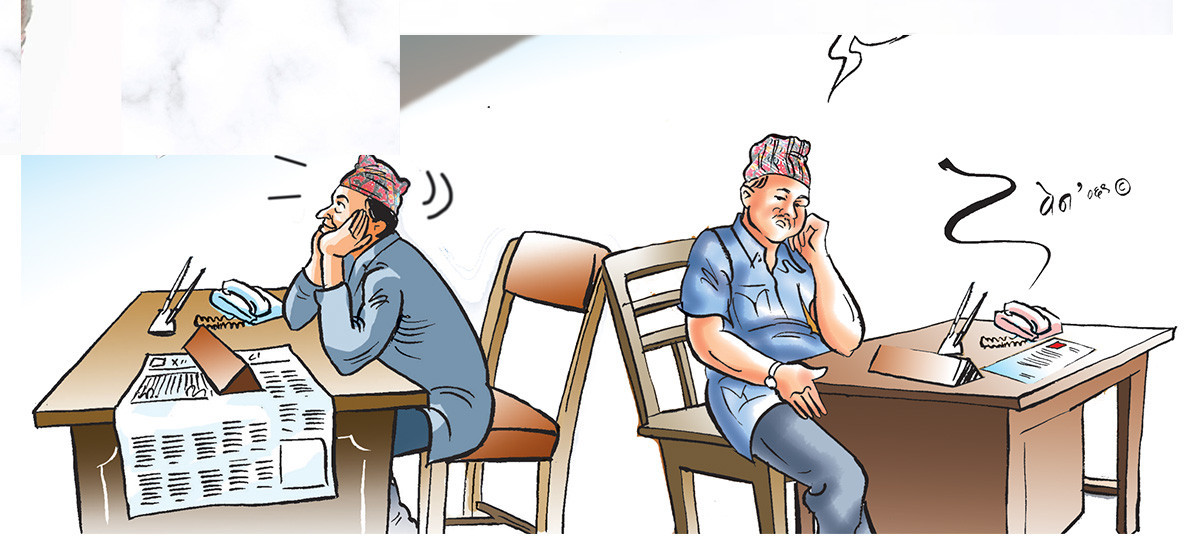


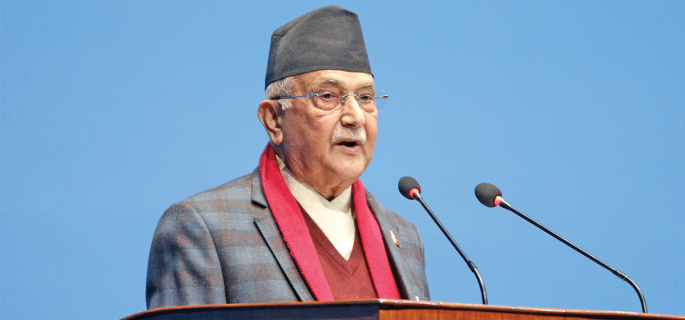
Leave A Comment